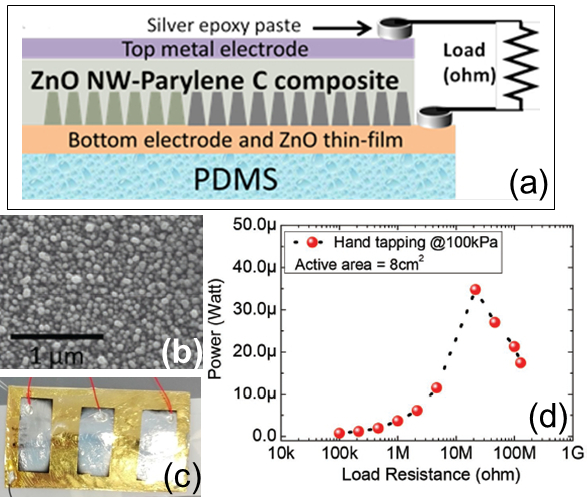ZnO nanowire based piezoelectric generators: principles, changelles and performance

Giorno 8 ottobre 2019, con inizio alle ore 12:00, presso l'Aula F del DFA, su invito del Prof. Salvatore Mirabella, la Dr.ssa Guylaine Poulin-Vittrant (CNRS, Université de Tours, INSA-CVL) terrà un seminario dal titolo ZnO nanowire based piezoelectric generators: principles, challenges and performance.
Tutti gli interessati sono invitati a partecipare.
Abstract. From the multitude of nanostructures under active research, Zinc Oxide (ZnO) nanowires (NWs) have attracted enormous attention due to the materials’ unique electrical, optical, mechanical and piezoelectric properties. Since 12 years, piezoelectric nanogenerators (NGs) incorporating ZnO nanowires have shown great potential for their applications in mechanical energy harvesters and self-powered tactile sensors. NGs convert a physical pressure into the motion of electrons, and thus, the unused mechanical energy of our surroundings into electrical energy, in order to supply low consumption devices. The targeted applications are diverse: health monitoring, medical implants, smart clothes, autonomous sensors, etc. Supplying them thanks to renewable energy systems, such as a photovoltaic cells, thermoelectric devices, or electromechanical harvesters, has become a major challenge for electronic industry. A possible route to reduce the price of ZnO NW based NGs is using low cost manufacturing over large-area substrates, and hydrothermal synthesis appears as a promising solution. After a general overview on GREMAN laboratory activities5, this presentation will show the works carried out on NGs modeling, manufacturing and characterization, thanks to CERTeM7 technical platform. In particular, the key issues will be presented, from the materials choice to the design and manufacturing of the full device, including the dedicated electronics, that is usually interfacing the NG and the targeted electrical load. The ongoing works will be described, as well as the perspectives of improvement of the NGs efficiency.